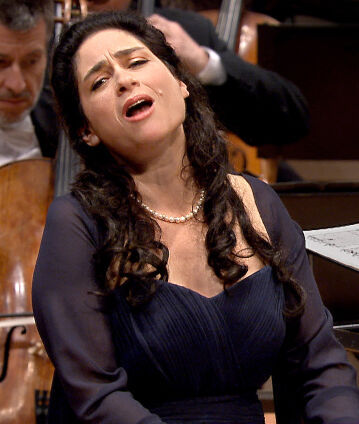Simon Rattle conducts “Bluebeard’s Castle”

Béla Bartók’s only opera Bluebeard’s Castle sounds enigmatic and dark. This is a spectral psychological drama, clad in an impressionist music rich in allusions. The vocal soloists at this performance with Simon Rattle are Rinat Shaham and Gábor Bretz. As a counterpoint there is – with Emanuel Ax as soloist – a new piano concerto by HK Gruber, whose style is characterised by subtle wit and jazzy swing.
The music of HK Gruber, which has been described with labels like “neo-romantic”, “neo-tonal”, “neo-expressionist” and “neo-Viennese,” defies categorisation. The oeuvre of the composer, who was born in Vienna in 1943, is simply too diverse and individual; the most varied of stylistic worlds coalesce seamlessly. Gruber studied double bass, French horn, piano and composition at the Viennese Conservatory, was a double bass player in the ORF Symphony Orchestra, and worked as a conductor with many internationally renowned orchestras. In his work he initially aligned himself towards the techniques of the avant-garde, until being advised by his colleague Kurt Schwertsik: “Write the music you want to hear.” Even as late as 1992, Gruber called this sentence the “simplest and at the same time most important answer to the question of my existence”. He had his breakthrough with the “pan-demonium” Frankenstein!!, premiered in 1978, characterised by typically Viennese black humour. Gruber has now composed a new piano concerto that can be heard for the first time conducted by Sir Simon Rattle in Berlin’s Philharmonic Hall. The soloist is none other than Emanuel Ax, whose interpretations have stimulated many reviewers to comparisons with the most famous piano virtuosos of the 20th century. Ax, who was the pianist in residence of the Berliner Philharmoniker in the 2005/06 season and who has been working together with the orchestra for about 25 years, has in recent years turned in particular towards contemporary music, and has premiered new works by John Adams, Christopher Rouse and Thomas Adès.
The programme continues with Béla Bartók’s one-act opera Bluebeard’s Castle, with Rinat Shaham (mezzo-soprano) and Gábor Bretz (bass): a symbolist psychological drama in which the external action is reduced to a minimum in favour of the “drame interieur”, since, in his own words, the composer furnished the mystery play by the Hungarian avant-gardist Béla Balázs, which is based on Maurice Maeterlinck’s theatre fairy tale Ariane et Barbe-Bleue, with “a symbolic timbral dimension of depth”. Accordingly, the actual drama, the psychological confrontation between the two players Bluebeard and Judith, also takes place principally in the orchestra: besides descriptive-narrative passages and musical images, which in the course of the opera create a fantastically coloured dream world, there is also a series of longer symphonic passages that accompany and complement the dramatic opera plot, continuing the vocal aspect extremely vividly.
© 2017 Berlin Phil Media GmbH
Related interviews
Category
Artists
Our recommendations
- “La Damnation de Faust” with Simon Rattle, Joyce DiDonato and Charles Castronovo
- Simon Rattle conducts “Manon Lescaut”
- Mozart’s “Magic Flute” from Baden-Baden
- Simon Rattle conducts “Salome”
- Ligeti’s “Le Grand Macabre” with Simon Rattle and Peter Sellars
- Kirill Petrenko conducts Strauss’s “Elektra” at the Easter Festival in Baden-Baden